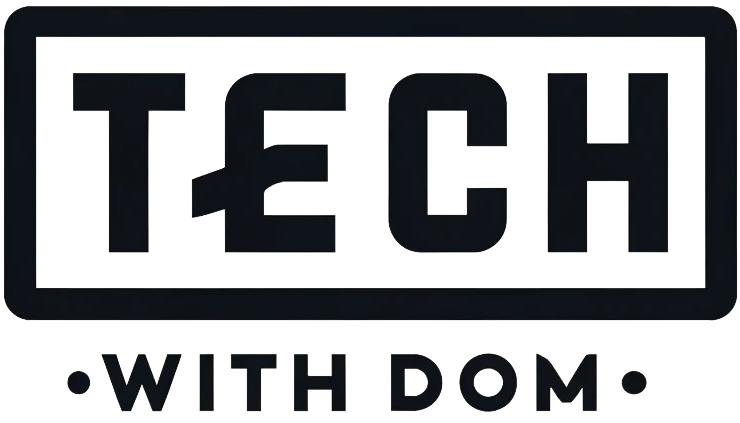6 Awesome Tools I Use for Writing Blog Posts in 2024

I’ve been writing blog posts for a while, and during that time I had the opportunity to discover and use a wide range of apps and tools which help me write and publish articles.
The tools I’m about to share with you not only help me get more content out, but they also help me write as a part-time blogger who works a full-time 9 to 5 job.
Having the right tools and a strategy that works for you can make a monumental difference to your work, especially for those who only do this part-time.
That is why I decided to share 6 tools I use for writing blog posts in 2024…
1. Google Sheets
I remember hating spreadsheets when I was at school, but I remember one teacher telling me to get used to them, as one day I will love them. I guess my teacher was right, I mean they are so useful!
These days, I primarily use Google Sheets as my chosen spreadsheet tool and I have a spreadsheet titled “Blog Post Idea Bank”, which is an idea I picked up from Mark Ellis.
Whenever I have an idea, I make a note of it in the spreadsheet and at the end of the week, I add the ideas I accumulated into the Notion. If it’s something I want to write about urgently, I skip that step altogether and start writing when I can.
The main reason I use a spreadsheet is because, it’s quick, simple, and it allows me to easily sort my ideas into categories.
2. Bublup
The second tool I wanted to add to this list is Bublup, which, when it comes to blogging, I mainly use for research.
Bublup offers a great way to save, organise and share files, links and more. It proves to be great for saving other content that you either want to voice your opinion or that you genuinely enjoy and may want to go back to in the future.
But Bublup is just so much more, especially when it comes to collaboration and sharing things. As an example, I have a tab on my website called Things I Recommend.
That is actually a web page created from several folders in Bublup, and the best part is that it only takes minutes to set up. Bublup can also be used as a lead magnet for your newsletter subscriptions, something that I will be exploring more of in the future.
As a paying customer, I think that Bublup is a great tool and one that I use myself and can recommend. That is why if you want to try it out for yourself, I am leaving my affiliate link.
3. My iPad
My iPad has been in the centre of my strategy for a very long time, my iPad.
I honestly don’t know where I would be without it, especially a part-time content creator.
The reason for this is simple, I tend to travel by train to and from work at least twice a week. It takes around an hour to get to the office by train, which gives me 2 hours per day to be productive. If we add my other office days as well as any other day I may have to travel for work, that gives me 4 hours or more per week to work on a blog post.
That’s where the iPad comes in handy!
I currently use the 11-inch iPad Pro from 2020 with a keyboard case. I know that this isn’t the newest iPad on the market, but it works incredibly well for this purpose.
I mean, tray tables on the trains tend to be pretty small and the 11-inch iPad Pro along with a cup of coffee fit’s them really well.
4. Ulysses
Since we’re talking about my iPad, I wanted to share the tool I use to write my blog posts, Ulysses.
I’ve used many tools for writing blog posts over the years and my favourite happens to be an app called Ulysses.
Unfortunately, this app is an Apple-only app, but I seriously recommend it because you can publish directly from the app.
The app also has a built-in proofreader, which is a really nice addition!
In the past, I used Notion as well as apps like Word and Google Docs to write my articles, but the experience that Ulysses provides is just unbeatable! It’s one of those apps you have to try for yourself to appreciate it.
Bonus Tool:
On a side note, I was able to get Ulysses through a Setapp subscription, which is basically like Netflix for app stores. I pay $12.49 per month for access on 1 Mac and 4 iOS devices and I gain access to over 200 apps including Ulysses, Spark, Craft, CleanMyMac and more!
I’m a big fan of the service and can’t stop singing its praises, that is why I decided to join their affiliate program. So, if you want to try Setapp free for 7 days, I am leaving my affiliate link.
5. Notion
Notion is a tool that many of my long-term readers may be surprised to find on this list and the main reason I returned to Notion was Thomas Frank’s Creators Companion template.
The template has been a huge help in organising my content, planning, validation and just keeping things organised.
As mentioned before, at the end of the week, I add all of my ideas into Notion, I then validate them using validation view and I schedule them within the template.
In the past, I also used the template to write my blog posts, but I have since moved on to Ulysses, which I feel works much better for me when it comes to writing.
6. Grammarly
The last tool I wanted to talk about in this article is Grammarly, which I primarily use in the browser.
I currently use the free version of the app and its purpose in my blogging tool kit is to be a last-minute proofreader.
I use the app when editing the article on WordPress and on Medium just before I publish it to ensure everything looks good.
I think that Grammarly is a must-have tool for everyone, I mean, we’re all human, and we all make mistakes, that’s why having a tool that helps us spot them is a must!
Final Thoughts
To summarise this article, there are many tools that I’ve used over the years for blogging, from Word to Google Docs and even OneNote. But without a doubt, the tools I share in this article have helped me the most.
But there are many other tools out there, these are the ones that I find useful.
That is why I want you to let me know what your favourite tools for writing blog posts are in the comments.
Disclaimer: This article contains affiliate links.
